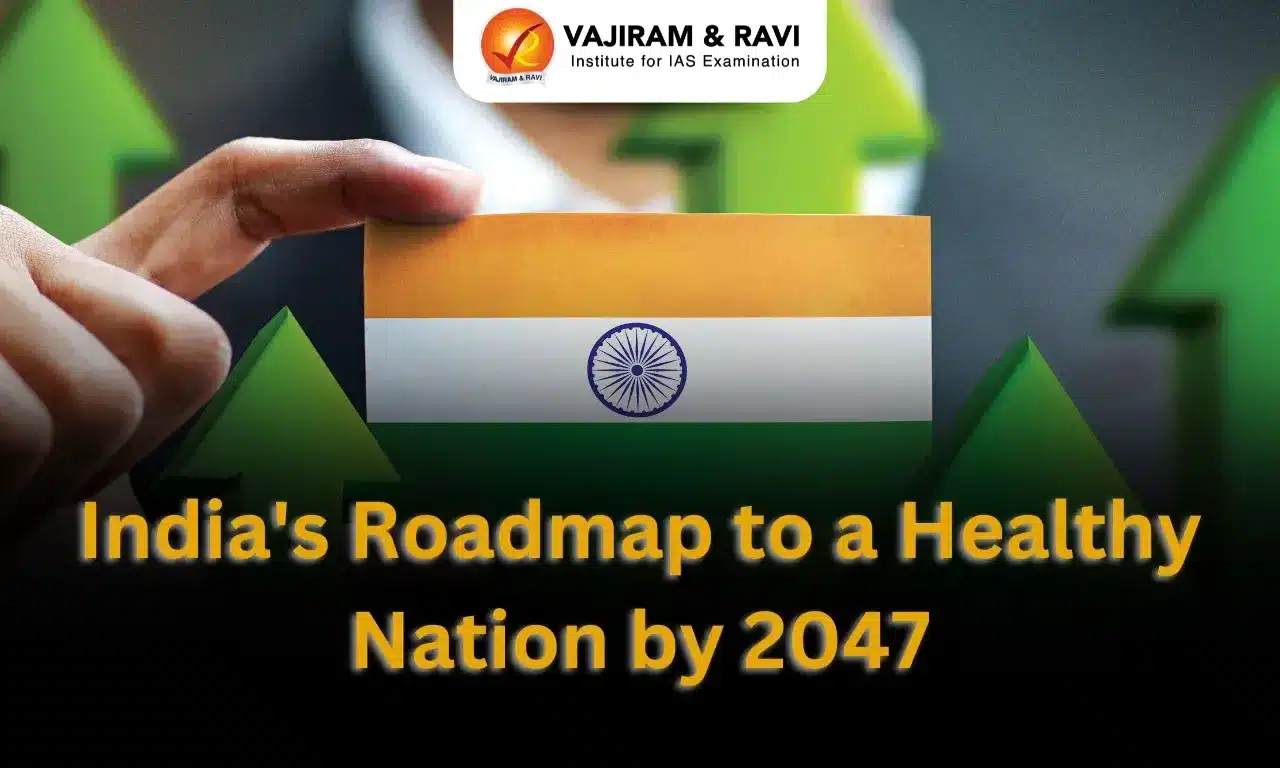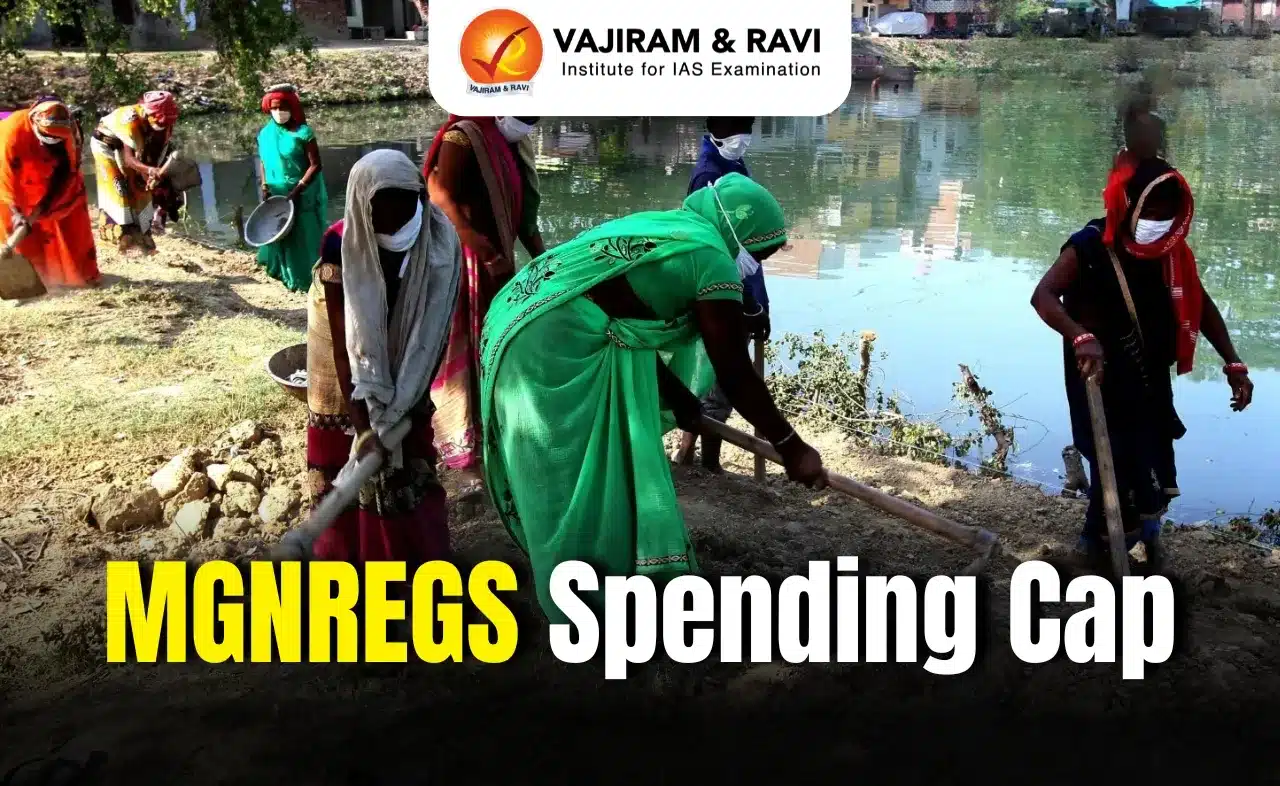What’s in Today’s Article?
- Key Pillars for a Healthy India
- Data-Driven Decision-Making for a Healthy India
- Digitally Integrated Healthcare for a Healthy India
- Conclusion
Why in News?
- India’s aspiration to become an economically developed nation (Viksit Bharat) by 2047 hinges on the health and productivity of its population.
- To achieve this, robust health systems must emerge by 2025, prioritizing prevention, equitable treatment, and the integration of digital solutions.
Key Pillars for a Healthy India:
- Universal Health Coverage (UHC) through primary healthcare:
- Financial and service goals: UHC aims to ensure financial protection and extensive service coverage.
- Resource allocation: Higher public financing is essential, with a focus on central and state budgets.
- Health workforce: Immediate efforts must address the shortage of highly skilled doctors by training technology-enabled frontline workers and allied health professionals.
- Ayushman Bharat as a template for transformation: Key components –
- Upgraded primary care architecture.
- Financial protection for vulnerable groups.
- Enhanced health infrastructure.
- Integration through digital health technology.
- Digital Health Mission: Vital for epidemiological intelligence, programme monitoring, and system integration.
Data-Driven Decision-Making for a Healthy India:
- Disaggregated and integrated data systems:
- Local-level insights: Data must be available at district and block levels for informed, resource-efficient, and equity-driven actions.
- Epidemiological transition:
- Rising burden of non-communicable diseases (NCDs) and mental health disorders requires accurate tracking of trends and risk factors.
- While the integrated disease surveillance programme (IDSP) provides data on some infectious diseases through sentinel sites, the rapid rise in zoonotic diseases calls for extensive and real-time surveillance data.
- Advanced surveillance systems:
- Infectious diseases: Real-time surveillance for infectious diseases, including zoonotic threats. Big data analytics will need to be at the heart of infectious disease surveillance.
- Techniques: Wastewater surveillance and antimicrobial resistance (AMR) monitoring must become routine.
- One Health Approach: Integration of data across human, animal, and environmental health systems to tackle climate-related health threats.
Digitally Integrated Healthcare for a Healthy India:
- Patient-centered data systems:
- Interoperability: Diagnostic and treatment data must be accessible across healthcare facilities.
- Challenges: Lack of private sector integration disrupts continuity of care.
- Public-private collaboration:
- Bridging gaps: Digital systems must connect primary care and publicly funded health insurance programmes that support secondary and tertiary hospital care (like PMJAY and state health insurance programmes).
- This will integrate public and private health data repositories.
- AI-driven insights: Application of artificial intelligence to Indian health data can enhance diagnostics and clinical management.
- Bridging gaps: Digital systems must connect primary care and publicly funded health insurance programmes that support secondary and tertiary hospital care (like PMJAY and state health insurance programmes).
- Community participation: Digital tools can enable crowdsourcing for outbreak surveillance and address programme implementation issues.
Conclusion:
- India’s journey toward a healthy and productive population by 2047 requires immediate and sustained efforts.
- By 2025, a digitally integrated, data-driven, and universally accessible healthcare system must take root, propelling the nation toward its health goals.
Q.1. What is the PMJAY?
Ayushman Bharat PM Jan Arogya Yojana (PM-JAY) is the largest health assurance scheme in the world which aims at providing a health cover of Rs. 5 lakhs per family per year for secondary and tertiary care hospitalization to over 12 crores poor and vulnerable families.
Q.2. What is the National Digital Health Mission (NDHM)?
The NDHM is a program that aims to create a digital health ecosystem in India. It was launched in 2020 to improve healthcare delivery by making medical information more accessible and transparent.
Source: IE
Last updated on June, 2025
→ UPSC Notification 2025 was released on 22nd January 2025.
→ UPSC Prelims Result 2025 is out now for the CSE held on 25 May 2025.
→ UPSC Prelims Question Paper 2025 and Unofficial Prelims Answer Key 2025 are available now.
→ UPSC Calendar 2026 is released on 15th May, 2025.
→ The UPSC Vacancy 2025 were released 1129, out of which 979 were for UPSC CSE and remaining 150 are for UPSC IFoS.
→ UPSC Mains 2025 will be conducted on 22nd August 2025.
→ UPSC Prelims 2026 will be conducted on 24th May, 2026 & UPSC Mains 2026 will be conducted on 21st August 2026.
→ The UPSC Selection Process is of 3 stages-Prelims, Mains and Interview.
→ UPSC Result 2024 is released with latest UPSC Marksheet 2024. Check Now!
→ UPSC Toppers List 2024 is released now. Shakti Dubey is UPSC AIR 1 2024 Topper.
→ Also check Best IAS Coaching in Delhi





















